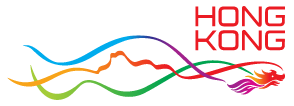Number of sampling sites under Territory-wide Sewage Surveillance Programme adjusted to enhance cost-effectiveness
******************************************************************************************
During the COVID-19 epidemic, the new sewage testing approach for quantitative detection of the SARS-CoV-2 virus became an important tool for the Hong Kong Special Administrative Region (HKSAR) Government to track the spread of the virus and identify the source of infection. At that time, when the SARS-CoV-2 virus was detected in sewage samples, the CHP would trace the source of the virus through the sewage network for source identification and early detection of infected cases. The CHP successfully identified more than 26 500 confirmed cases through the programme, most of which were asymptomatic. This played a pivotal role in the timely implementation of isolation and quarantine measures in response to different stages of development to interrupt the spread of the disease in the community. The project won the Gold Award in the "Performance Improvement and Operational Solutions" category of the 2024 International Water Association Project Innovation Awards, fully recognising the HKSAR Government's innovative spirit and outstanding technological achievements in using sewage surveillance to combat the epidemic.
With the resumption of normalcy, COVID-19 has been managed as a general respiratory disease. As a result, the objective of sewage surveillance has shifted from source tracing to routine surveillance of the virus activity in the community. The CHP continuously optimised the programme while maintaining the effectiveness of the surveillance, using simulation models to analyse different combinations of sampling sites. Results showed that by changing the number of sampling sites from the 120 to 154 (i.e. three to 14 per district) to one per district (i.e. 18 in total) located further downstream which covered the largest population (covering over 2.2 million people in total), the trend of the sewage viral load data and the relevant clinical surveillance indicators (including the percentage of respiratory specimens testing positive for SARS-CoV-2) were highly correlated. In other words, adjusting the number of sampling sites does not affect the effectiveness of surveillance.
The optimised strategy, implemented since April 2024, continues to monitor the activity of COVID-19 effectively, while significantly reducing operating costs by nearly 80 per cent. Surveillance results and analyses will be disseminated weekly by the CHP through the "COVID-19 & Flu Express" for public information.
Looking ahead, the HKSAR Government will continue to enhance the sewage surveillance technology and explore its application to the surveillance of other infectious diseases, with a view to detecting the risk of different infectious diseases at an early stage and formulating appropriate public health response measures in a timely manner to protect public health.
Ends/Wednesday, April 30, 2025
Issued at HKT 19:42
Issued at HKT 19:42
NNNN




